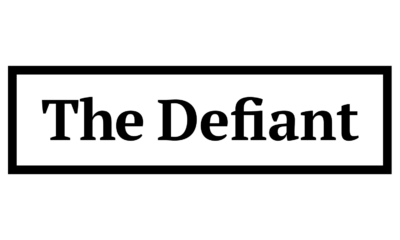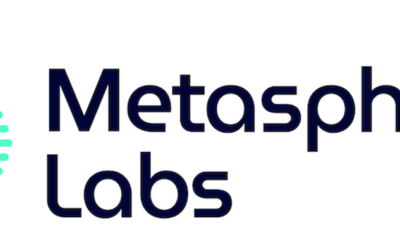News
The untold story of Kickstarter’s crypto Hail Mary—and the secret $100 million a16z-led investment to save its fading brand

In early December 2021, employees at the crowdfunding startup Kickstarter got news of a windfall: An investor group wanted to buy some of their shares. The news came as a surprise. While the workers had amassed equity in the firm for years, many had given up hope of ever selling it.
The Kickstarter they now worked for was a very different place than the red-hot startup of 2009 that had launched viral projects like Cards Against Humanity and Peloton. For a while, Kickstarter was the toast of entrepreneurs and the public alike, and even achieved the most coveted startup achievement: Its name became a noun as people used “Kickstarter” synonymously with internet crowdfunding campaigns.
Back then, the company’s anti-corporate slant and grassroots spirit had lured celebrity investors and helped shape the early New York tech scene. Its events, from film premieres to rooftop festivals, and its viral money-raising campaigns had helped prove that creative business ideas could find success—and funding—outside of Silicon Valley, and that artists could find support from their fans.
But a dozen years after its launch, Kickstarter had lost its cachet of cool and churned through CEOs. The Kickstarter of 2021 had little to offer would-be investors but headaches. Growth had flatlined at the startup, which made its money by taking a small cut when a project on its platform met a funding threshold, and its onetime feel-good culture had become toxic in the wake of a bitter unionization drive. New shareholders would be inheriting ownership of a brand that many felt had turned stale.
For Kickstarter’s employees and early investors, the surprise investment felt like an opportunity to make things right. After all, this was no small top-up to keep the lights on, but a staggering $100 million investment that valued the startup at around $400 million. But there was a catch. The investment came with the expectation that Kickstarter would attempt a pivot to blockchain as its new benefactor—the crypto fund of venture behemoth Andreessen Horowitz—sought to capitalize on the latest hype cycle.
The windfall could have been the boost the company needed to help it reset and get back on a path toward relevance. Instead, the blockchain pivot triggered a vitriolic response from the community of creators and fans on which the company relied, leading to the loss of major projects and a reputational hit from which Kickstarter has yet to recover. The turmoil shows how even the most promising startups can lose their way, but also underscores the challenge of pursuing a do-gooder mission atop a foundation of venture capital.
Story continues
Trouble in paradise
When it launched in 2009, Kickstarter was at the vanguard of a cohort of New York startups—think Etsy or Foursquare—that would challenge their West Coast counterparts by leaning into arts and culture versus the developer-first sensibilities of Bay Area projects like Google and Facebook.
The idea for Kickstarter—where artists or creators turned to the public to fund their new album, board game, or comic book—came from Perry Chen, a former DJ who launched the company after he struggled to raise money to throw a concert during New Orleans’ Jazz Fest. Its highest-profile venture backer was Fred Wilson, who made early bets on the likes of Tumblr and Twitter, and whose Union Square Ventures is perhaps New York’s most iconic venture shop.
Kickstarter started out in a loft with tin ceilings on the trendy Lower East Side of Manhattan—its front door was painted with graffiti and a sticker that read “Eat Shit.” The company rallied its users around events, throwing its first annual film festival in 2010 on the rooftop of the Old American Can Factory in Gowanus, Brooklyn. A screen streamed footage of projects funded by the platform—including a choreographed dance that mimicked endangered plant and animal species—while a Kickstarter-backed brass band performed for guests who lined up for pies and artisanal sodas from crowdfunded food projects.
Early employees remember a company that valued creativity and a socially conscious ethos over the growth-at-all-costs mentality that typically defined Silicon Valley startups. Rather than pursuing the usual venture path of going into the red to achieve hockey stick growth, the Brooklyn startup notched a profit in its second year through the 5% cut and processing fees it took from successfully funded projects.
The model produced internet virality and breakout hits, including Fleabag, the Phoebe Waller-Bridge BBC comedy that would go on to win Emmys, and the VR headset Oculus Rift, which would later sell for $2 billion to Facebook. In 2013, Veronica Mars showrunner Rob Thomas turned to Kickstarter to raise $5.7 million for a movie after the cult-favorite television series was canceled by Hulu. It was the most that had ever been pledged to a Kickstarter project—and a testament to its mission to put authority back into the hands of creators.
“Art for art’s sake was really important,” one former employee told Fortune. “It shouldn’t be just how much money a project can turn around for investors that should dictate its being allowed to get made.”
Kickstarter made it clear early on that it wasn’t pursuing a path to riches, but investors poured in money all the same, including a $10 million round announced in 2011. Early backers included Kickstarter’s fellow creative travelers like Scott Heiferman, the cofounder of Meetup, and Zach Klein, the cofounder of Vimeo, as well as Arrested Development actor David Cross. Chris Dixon, the future head of Andreessen spinoff a16z crypto who was getting his start as an angel investor, also came on board.
All seemed to understand that Kickstarter was not built to deliver outsize returns. In a 2013 blog post, Wilson specifically pointed out that Kickstarter didn’t need help from VCs (even though they contributed nonetheless): “It has never needed to take outside money, and it has not done much to optimize its profitability,” Wilson wrote. Another early investor told Fortune that they put money in because they “just loved the concept” and never believed it would lead to a financial payoff.
Those feel-good early days at Kickstarter, however, would soon give way to another sentiment—a pervasive sense of chaos. A CEO carousel began at the company as Kickstarter cofounder Yancey Strickler took over from Chen in 2014, although the latter would retain a management role for years to come.
Then in 2015, Kickstarter took the rare step of becoming a public benefit corporation, a type of classification where for-profit companies agree to meet social and environmental standards. An employee-produced podcast described the public benefit corporation as a legal structure that could protect Kickstarter from attempts by investors or directors to exit or sell the company. “Restructuring as a PBC blurs the line between personal and company values,” one employee said on the podcast. “Our founders would regularly describe the PBC as a structure that allows the company to operate more like a person driven by more than just profit.”
Chen reinforced the message when he returned as CEO in 2017 and restated earlier proclamations that Kickstarter would never go public or be acquired. The posturing and whiplash of company priorities had begun to grate on employees. “I definitely felt that there was an extreme level of exhaustion and burnout, and I don’t think staff had a lot of faith in Perry,” said one.
Even though Kickstarter figured out early on how to make a profit, the company could never seem to take off. The number of projects plateaued in 2016 at around 19,000 per year—with no signs of growth. Dollars raised on the platform, where Kickstarter got its cut, would fluctuate year-to-year and peaked during the pandemic at nearly $814 million.
View this interactive chart on Fortune.com
An early investor told Fortune that Kickstarter was never able to find an equilibrium between growth and staying true to its new charter, which committed it to socially worthy but expensive or difficult obligations. Despite the noble mission, employees struggled to find paths for career growth or advance their own initiatives as the company’s competing priorities bred dysfunction.
In 2012, Kickstarter spent $7.5 million on a building owned by a pencil company in the modish Brooklyn neighborhood of Greenpoint—which soon became a parody of a mid-2010s tech office. There was the obligatory rooftop garden, solarium, and movie theater. Employees would stop by with their friends late on a Saturday night and still find people hanging out. The flip side was a tetherless haze of a work culture, where projects languished and some employees only worked a few hours each day.
Meanwhile, the company continued to flail when it came to growth strategies. It acquired a startup called Drip in 2016 as a response to the quickly growing crowdfunding subscription platform Patreon, but the move didn’t pan out, and Kickstarter’s planned answer to its rising competitor was shut down altogether.
“It’s not the easiest task to come up with something that doesn’t start conflicting with some of their mission,” one of the investors said. “It felt like things really just kind of plateaued for quite a few years.”
Discontent began bubbling up among employees, many of whom had joined the company because of its mission, which one described as a “dreamy, sort of lofty vibe.” They knew their equity in the startup would never amount to much, thanks to Chen’s pledge to never sell.
In March 2019, the tensions in Kickstarter’s workplace culture boiled over in the form of a union drive—at the time, an unprecedented step for full-time workers at a tech company. New CEO Aziz Hasan—yet another leader who had taken over for Chen—responded by calling an all-hands to say the company would not voluntarily recognize the union. Kickstarter fired two of the employees leading the labor drive. The pair promptly turned around and filed a complaint accusing the startup of illegal retaliation.
Kickstarter’s bungling of the union drive punctured illusions that it was a different kind of startup. The move drew condemnation from the same creators who had catapulted Kickstarter to popularity, including David Cross, who urged followers to support the union on Twitter. Backers of progressive projects funded through the platform, like the magazine Current Affairs, threatened to pull their funding. The company laid off 18% of its 140-person workforce shortly after recognizing the union, with Hasan citing a drop-off in new projects on the platform.
In early 2020, the pandemic drove Kickstarter’s employees out of their Greenpoint headquarters into remote work. During this time, the platform saw a brief uptick in growth as people stuck at home looked for ways to support creators. Meanwhile, venture funding flowed into other startups at record levels and valuations, while crypto prices soared to all-time highs with Bitcoin scraping $69,000 in November 2021. Kickstarter’s blockchain announcement—and the $100 million tender offer—came just a month later.
The blockchain gamble
Kickstarter was exactly the kind of company you might expect to captivate the attention of up-and-coming venture capitalist Chris Dixon. Dixon—who, in the early 2010s, ran a recommendation startup called Hunch—wrote regularly on his widely read blog about the need to harken back to the more egalitarian era of the web. He and his peers at Founder Collective, a small venture fund started by New York tech founders, had already backed another company at the time called 20×200, which was aimed at “democratizing art” by splitting revenue with artists to avoid any “groveling to Upper East Side socialites,” as Dixon wrote in 2009.
Dixon and his Hunch cofounder Caterina Fake both invested in Kickstarter in 2011—helping to anoint the startup as a darling in New York tech circles. Soon after, Dixon joined Andreessen Horowitz, where he became enamored with blockchain, viewing the technology as a way to bring the internet back to its open-source roots. The firm would spin out a separate operation called “a16z crypto,” dedicated to blockchain investments, in 2018.
In his new role as head of a16z crypto—and bearing a whopping $2.2 billion from its third fund—Dixon stayed in touch with Chen. According to a person familiar with the deal, members of the Kickstarter board, including Chen, approached Dixon in the summer of 2021 about a new investment in Kickstarter, with the proposed blockchain pivot offered as the impetus for the deal. For Dixon, the prospect of shepherding a familiar name like Kickstarter into the promised land of Web3 proved too enticing to pass up.
Rather than injecting capital into Kickstarter to buy new equity, the deal came in the form of a tender offer, meaning all of the new cash went to buy up outstanding shares owned by other shareholders—none would go directly to Kickstarter. Instead, it allowed employees and early investors to cash out.
The stealth round totaled $100 million, according to people familiar with the deal. It was led by a16z crypto and included a handful of other smaller investors, including Yes VC, the early-stage investment firm headed by Dixon’s onetime cofounder Fake, who had also cofounded photo site Flickr.
While this was a massive check for a company that pulled in slim revenue figures, the deal was not out of the ordinary for a16z crypto. Dixon had placed other moonshot bets to enact his vision of a crypto-run web, such as co-leading two deals in 2018 totaling over $160 million for a startup called Dfinity that was building a blockchain-based version of the internet. (The company, instead, became mired in controversy after its token crashed 95% shortly after launching.)
In return for the a16z largesse, Kickstarter would take its own crack at becoming a Web3 company. The grand but improbable plan called for shifting its entire platform onto a blockchain called Celo, another a16z portfolio company, where it would operate as an open-source protocol—akin to http or Bitcoin—rather than rely on the proprietary code model used by most tech firms.
Users, meanwhile, would be able to create mini platforms of their own around niche interests like anime, bringing in more people and splitting any profits with Kickstarter. This structure, which would echo other initiatives like Farcaster, did not require donors to pay with cryptocurrencies but would entail Kickstarter’s creating an entirely new, open-source version of its existing software built atop a blockchain that had never been tested by a massive consumer application.
Few in the crypto industry have ever regarded Celo as a top-tier blockchain project, but it did boast a “carbon negative” footprint that would also allow Kickstarter to abide by its environmentally conscious mission statement. Celo’s cofounder, Sepandar David Kamvar, joined Kickstarter’s board in August 2022.
The deal didn’t require Kickstarter to follow through on the pivot. Still, one employee who worked at Kickstarter at the time of the tender offer said that the company made clear through internal communications that a16z was involved and that the venture giant was investing in Kickstarter because the company was willing to move into Web3. The company represented the perfect guinea pig.
The tender offer arrived in employees’ inboxes on Dec. 8, 2021, the same day that Kickstarter revealed its blockchain ambitions. They could sell up to 32.49% of their shares at a price of $7.41, a steep markup from the employees’ purchase price, with the option of selling even more if others did not take part. Kickstarter would even cover the associated fees. “[The company] seemed very enthusiastic,” said one former employee.
For some employees, the buyout represented an unexpected gift after years of turmoil. “This is a once-in-a-lifetime opportunity,” one employee remembered thinking after getting the tender offer.
Taylor Moore, one of the fired union organizers, viewed the announcement with trepidation.
“Kickstarter’s leadership, talking about Perry Chen and some of his other sycophants, are a classic story of the Emperor’s New Clothes, just completely out of touch,” he told Fortune. “Whereas the people who actually work … they know that it’s a stupid idea.”
Despite Chen’s newfound enthusiasm about blockchain, the announcement came with few specifics, and the timeline set out for the pivot was less than a year—raising fears among the Kickstarter community that, amid the hype of the crypto market, the plan would transform their beloved platform into a scammy get-rich-quick scheme. Some users expressed concern over the environmental impact of moving over to blockchain, which can have a massive carbon footprint, even though Kickstarter had chosen Celo because of its climate-friendly approach. And even though Sam Bankman-Fried’s FTX was months away from imploding, the scandals piling up in the crypto industry made everyone wary.
“Pretty much all we have seen … from the crypto space is rampant fraud, theft, and financial ruin,” wrote Isaac Childres, the founder of a popular tabletop game company, in a June 2022 newsletter announcing he would turn to other platforms to crowdfund future projects.
Most of the community outrage fell upon employees, who expressed their disbelief in group chats and swapped sardonic jokes about Kickstarter NFTs. Meanwhile, the company’s decision to use an outside consultant to announce the blockchain news meant that many staffers were ill-prepared for the sudden torrent of vitriol from users. And given Kickstarter’s checkered history of launching new initiatives, doubt spread about its capacity to pull off a major technology pivot. “It was inconceivable,” said one employee.
The blockchain plan seemed impossible—and that would soon prove to be the case. Within months, executives stopped bringing it up at all, and no section of the platform was ever converted to run on a blockchain. “It felt like Drip,” said one former employee, referring to the ill-fated Patreon competitor. “Announcing this thing, and then just abandoning it.”
In 2022, Kickstarter hired yet another new CEO, Everette Taylor—the company’s fifth change in a decade—who started after the union organization, blockchain rollout, and after the company had parted ways with approximately 40% of its employees. Chen quietly stepped down as chair of the board, and last year began a transition plan to leave the board altogether, according to a Kickstarter spokesperson.
The new CEO Taylor immediately made clear that blockchain was no longer a priority for the company, telling TechCrunch on Oct. 4, 2022—a week after he started—that “we’re not committed to moving Kickstarter to the blockchain or doing anything specific there.”
Though Dixon and a16z crypto declined to comment for the article, Dixon made clear on a recent press tour for his new book, Read Write Own, that blockchain is a long-term play, despite the public’s apparent distaste for the technology. Meanwhile, Kickstarter hasn’t turned its back on it altogether. After the 2021 announcement, it spun out a separate public benefit corporation called the Creative Crowdfunding Protocol and staffed it with two employees, including Kickstarter’s former manager of operations. Today, its website lists two job openings for software engineers in Bangladesh, and Celo still refers to Kickstarter as an “ecosystem partner.”
The pivot didn’t hurt Kickstarter—and the money from a16z certainly helped build some goodwill with staffers and investors. But employees say it was yet another distraction that kept the company from pulling out of its doldrums. And by ultimately alienating users and employees, the blockchain debacle contributed to the overall perception that Kickstarter’s best days were behind it.
In an interview hosted at Celo in late 2022, Kickstarter COO Sean Leow insisted that the company continued to believe in the protocol. The interviewer asked whether he saw any gaps in the vision. “I would say 95% of it is gaps at this point,” Leow replied.
Kickstarter declined to make Leow, Taylor, and other executives available for an interview.
Still searching
Kickstarter may have achieved the rare startup distinction of becoming a noun, but the company has lost its gleam. “Everybody’s gut reaction when I said that I worked at Kickstarter was, ‘Oh, that’s still a company?’” said one former employee, who joined in 2022.
Today, Everette Taylor continues to hunt for fresh revenue streams, launching initiatives such as a plan to help creators with shipping logistics and taxes. The CEO is also attempting to reintroduce Kickstarter to the public, including through magazine interviews and conference appearances that highlight his role as a Black CEO and the company’s commitment to diversity within the C-suite.
A year after Taylor joined, Kickstarter brought on a new CFO to help improve revenue. Even as fundraising totals have grown, revenue has declined since 2019, according to company data as well as an internal email sent by the CFO. “They talk about it all the time,” said one former employee. “It feels like every all-hands is an emergency event.” A spokesperson declined to provide Kickstarter’s revenue figures.
Ultimately, the new products do not address Kickstarter’s fundamental problem: The platform has funded roughly the same number of projects each year for the past decade. And Taylor’s more corporate approach to a company whose internal motto was once “Fuck the monoculture” has drawn criticism from five former employees who spoke with Fortune. In early 2023, Taylor was the face of an advertising campaign for Chevrolet, and he joined the board of a publicly traded online luxury marketplace in February.
“A lot of people were dismayed to see the CEO doing sponsored content,” said one. “It felt like a betrayal of the values of the company.”
The prevalence of fraud on the platform is another persistent anxiety. The company has notched more than 100 complaints with the Better Business Bureau in the past three years, many of which revolve around allegations of scams or users never getting products they backed. Last year, Ohio’s attorney general settled with a Kickstarter user for allegedly raising money for turtle conservation charities only to turn around and blow it on crypto. The scammer agreed to pay back the defrauded donors and refrain from crowdfunding campaigns in Ohio for five years.
Because of Kickstarter’s mechanics, projects can achieve full funding—and Kickstarter will receive its cut—with no intention of ever launching. Some users will also make small pledges on the platform to test out stolen credit cards. As Fortune learned, one internal estimate puts the amount of revenue that comes from fraudulent projects as high as 18%—a concern echoed by past actions from different states’ attorneys general and the Federal Trade Commission, who have targeted Kickstarter scams in their investigations. (Kickstarter itself has not been charged in these lawsuits or complaints.) A spokesperson denied the estimate and said the company has implemented “extensive measures” to address fraud, including new detection software and processes.
Crypto is creeping back into vogue thanks to skyrocketing prices, and an open-source protocol could still present a solution to Kickstarter’s nagging issues. The immutable ledger of the blockchain, with its traceable addresses and transaction history, could help solve the platform’s difficulties with fraud and trust, as Leow brought up in his late 2022 interview.
The biggest problem for Kickstarter, though, may be that time has simply passed it by. “I feel like they just were left in the dust culturally,” one former employee told Fortune. “What’s the argument for someone to go to Kickstarter when there’s all these other ways [to raise money] that are more viable, like being a TikTok influencer?”
Kickstarter still does fill a niche for indie creators who want to create a board game with a verbose set of instructions, or a clock that uses AI to write a new poem every minute.
“Since our launch in 2009, $8 billion has been pledged to creative projects on Kickstarter,” the spokesperson said in a statement. “As we look to the future, we’ll continue to center our community in everything we do.”
The spokesperson said that the company sits in a different position within the creator economy than platforms like TikTok. They pointed to recently funded projects from social media influencers, as well as recent Kickstarter-funded films showcased at Sundance.
Competitors like BackerKit, however, hoovered up disaffected users after the blockchain scandal, and Kickstarter continues to bleed top creators. In February, the fantasy author Brandon Sanderson—who launched the largest campaign in Kickstarter’s history—announced his next project would be on BackerKit.
Ultimately, Kickstarter was never able to reinvent the rules of investing and community support, instead tripping over its own idealism whenever it sought to leap to the next level.
“There is this desire to become more of a marketplace and be a household name again,” said one staffer who left recently. “I feel like we’re stagnating because our reputation is getting worse and worse.”
The company never moved back into its 33,000-square-foot brick headquarters in Greenpoint after the pandemic, instead opting to put the property up for sale to the tune of $29.5 million. After months of searching, Kickstarter is in talks with a potential buyer: a talent agency for social media influencers.
This story was originally featured on Fortune.com
News
Bitcoin soars above $63,000 as money flows into new US investment products

Bitcoin has surpassed the $63,000 mark for the first time since November 2021. (Chesnot via Getty Images)
Bitcoin has broken above the $63,000 (£49,745) mark for the first time since November 2021, when the digital asset hit its all-time high of over $68,000.
Over the past 24 hours, the value of the largest digital asset by market capitalization has increased by more than 8% to trade at $63,108, at the time of writing.
Learn more: Live Cryptocurrency Prices
The price appreciation was fueled by record inflows into several U.S.-based bitcoin cash exchange-traded funds (ETFs), which were approved in January this year.
A Bitcoin spot ETF is a financial product that investors believe will pave the way for an influx of traditional capital into the cryptocurrency market. Currently, indications are favorable, with fund managers such as BlackRock (BLK) and Franklin Templeton (BEN), after allocating a record $673 million into spot Bitcoin ETFs on Wednesday.
Learn more: Bitcoin’s Success With SEC Fuels Expectations for an Ether Spot ETF
The record allocation surpassed the funds’ first day of launch, when inflows totaled $655 million. BlackRock’s iShares Bitcoin Trust ETF (I BITE) alone attracted a record $612 million yesterday.
Bitcoin Price Prediction
Earlier this week, veteran investor Peter Brandt said that bitcoin could peak at $200,000 by September 2025. “With the push above the upper boundary of the 15-month channel, the target for the current market bull cycle, which is expected to end in August/September 2025, is raised from $120,000 to $200,000,” Brandt said. published on X.
The influx of capital from the traditional financial sphere into Bitcoin spot ETFs is acting as a major price catalyst for the digital asset, but it is not the only one. The consensus among analysts is that the upcoming “bitcoin halving” could continue to drive flows into the bitcoin market.
The Bitcoin halving is an event that occurs roughly every four years and is expected to happen again next April. The halving will reduce the bitcoin reward that miners receive for validating blocks on the blockchain from 6.25 BTC to 3.125 BTC. This could lead to a supply crunch for the digital asset, which could lead to price appreciation.
The story continues
Watch: Bitcoin ETFs set to attract funds from US pension plans, says Standard Chartered analyst | Future Focus
Download the Yahoo Finance app, available for Apple And Android.
News
FRA Strengthens Cryptocurrency Practice with New Director Thomas Hyun

Forensic Risk Alliance (FRA), an independent consultancy specializing in regulatory investigations, compliance and litigation, has welcomed U.S.-based cryptocurrency specialist Thomas Hyun as a director of the firm’s global cryptocurrency investigations and compliance practice. Hyun brings to the firm years of experience building and leading anti-money laundering (AML) compliance programs, including emerging payment technologies in the blockchain and digital asset ecosystem.
Hyun has nearly 15 years of experience as a compliance officer. Prior to joining FRA, he served as Director of AML and Blockchain Strategy at PayPal for four years. He established PayPal’s financial crime policy and control framework for its cryptocurrency-related products, including PayPal’s first consumer-facing cryptocurrency offering on PayPal and Venmo, as well as PayPal’s branded stablecoin.
At PayPal, Hyun oversaw the second-line AML program for the cryptocurrency business. His responsibilities included drafting financial crime policies supporting the cryptocurrency business, establishing governance and escalation processes for high-risk partners, providing credible challenge and oversight of front-line program areas, and reporting to the Board and associated authorized committees on program performance.
Prior to joining PayPal, Hyun served as Chief Compliance Officer and Bank Secrecy Officer (BSA) at Paxos, a global blockchain infrastructure company. At Paxos, he was responsible for implementing the compliance program, including anti-money laundering and sanctions, around the company’s digital asset exchange and its asset-backed tokens and stablecoins. He also supported the company’s regulatory engagement efforts, securing regulatory approvals, supporting regulatory reviews, and ensuring compliance with relevant digital asset requirements and guidelines.
Thomas brings additional experience in payments and financial crime compliance (FCC), having previously served as Vice President of Compliance at Mastercard, where he was responsible for compliance for its consumer products portfolio. He also spent more than seven years in EY’s forensics practice, working on various FCC investigations for U.S. and foreign financial institutions.
Hyun is a Certified Anti-Money Laundering Specialist (CAMS) and a Certified Fraud Examiner (CFE). He is a graduate of New York University’s Stern School of Business, where he earned a bachelor’s degree in finance and accounting. Additionally, he serves on the board of directors for the Central Ohio Association of Certified Anti-Money Laundering Specialists (ACAMS) chapter.
Commenting on his appointment, Hyun said, “With my experience overseeing and implementing effective compliance programs at various levels of maturity and growth, whether in a startup environment or large enterprises, I am excited to help our clients overcome similar obstacles and challenges to improve their financial crime compliance programs. I am excited to join FRA and leverage my experience to help clients navigate the complexities of AML compliance and financial crime prevention in this dynamic space.”
FRA Partner, Roy Pollittadded: “As the FRA’s sponsor partner for our growing Cryptocurrency Investigations and Compliance practice, I am thrilled to have Thomas join our ever-expanding team. The rapid evolution of blockchain and digital asset technologies presents both exciting opportunities and significant compliance challenges. Hiring Thomas in a leadership role underscores our commitment to staying at the forefront of the industry by enhancing our expertise in anti-money laundering and blockchain strategy.”
“Thomas’ extensive background in financial crime compliance and proven track record of building risk-based FCC programs in the blockchain and digital asset space will be invaluable as we continue to provide our clients with the highest level of service and innovative solutions.”
“FRA strengthens cryptocurrency practice with new director Thomas Hyun” was originally created and published by International Accounting Bulletina brand owned by GlobalData.
The information on this website has been included in good faith for general information purposes only. It is not intended to amount to advice on which you should rely, and we make no representations, warranties or assurances, express or implied, as to its accuracy or completeness. You must obtain professional or specialist advice before taking, or refraining from, any action on the basis of the content on our website.
News
Bitcoin trades around $57,000, crypto market drops 6% ahead of Fed decision

-
Bitcoin fell in line with the broader cryptocurrency market, with ether and other altcoins also falling.
-
Financial markets were weighed down by risk-off sentiment ahead of the Fed’s interest rate decision and press conference later in the day.
-
10x Research said it is targeting a price target of $52,000 to $55,000, anticipating further selling pressure.
Bitcoin {{BTC}} was trading around $57,700 during European morning trading on Wednesday after falling to its lowest level since late February, as the world’s largest cryptocurrency recorded its worst month since November 2022.
BTC has fallen about 6.3% over the past 24 hours, after breaking below the $60,000 support level late Tuesday, according to data from CoinDesk. The broader crypto market, as measured by the CoinDesk 20 Index (CD20), lost nearly 9% before recovering part of its decline.
Cryptocurrencies have been hurt by risk-off sentiment in broader financial markets amid stagflation in the United States, following indications of slowing growth and persistent inflation that have dampened hopes of an interest rate cut by the Federal Reserve. The Federal Open Market Committee is due to deliver its latest rate decision later in the day.
Ether {{ETH}} fell about 5%, dropping below $3,000, while dogecoin {{DOGE}} led the decline among other major altcoins with a 9% drop. Solana {{SOL}} and Avalanche {{AVAX}} both lost about 6%.
Bitcoin plunged in April, posting its first monthly loss since August. The 16% drop is the worst since November 2022, when cryptocurrency exchange FTX imploded, but some analysts are warning of further declines in the immediate future.
10x Research, a digital asset research firm, said it sees selling pressure toward the $52,000 level due to outflows from U.S. cash exchange-traded funds, which have totaled $540 million since the Bitcoin halving on April 20. It estimates that the average entry price for U.S. Bitcoin ETF holders is $57,300, so this could prove to be a key support level.
The closer the bitcoin spot price is to this average entry price, the greater the likelihood of a new ETF unwind, 10x CEO Markus Thielen wrote Wednesday.
“There may have been a lot of ‘TradeFi’ tourists in crypto – pushing longs all the way to the halving – that period is now over,” he wrote. “We expect more unwinding as the average Bitcoin ETF buyer will be underwater when Bitcoin trades below $57,300. This will likely push prices down to our target levels and cause a -25% to -29% correction from the $73,000 high – hence our $52,000/$55,000 price target over the past three weeks.”
The story continues
UPDATE (May 1, 8:56 UTC): Price updates throughout the process.
UPDATE (May 1, 9:57 UTC): Price updates throughout the process.
UPDATE (May 1, 11:05 UTC): Adds analysis from 10x.
News
The Cryptocurrency Industry Is Getting Back on Its Feet, for Better or Worse

Hello from Austin, where thousands of crypto enthusiasts braved storms and scorching heat to attend Consensus. The industry’s largest and longest-running conference, which can sometimes feel like a religious revival, offers opportunities to chat and listen to leading names in crypto. And for the casual observer, Consensus offers a useful glimpse into the mood of an industry prone to wild swings in fortune.
Unsurprisingly, the mood is noticeably more positive than it was a year ago, when crowds were sparse and many attendees were quietly confiding that they were considering switching to AI. In practice, that means some of the more obnoxious elements are back, but not to the level of Consensus 2018 in New York, when charlatans parked Lamborghinis outside the event and the hallways were lined with booth girls and scammers pitching “ICOs in a box.”
This time around, Elon Musk’s Cybertrucks have replaced Lamborghinis as the vehicle of choice for marketers. One of the most notable publicity stunts was a startup that paid a poor guy to parade around in the Texas sun in a Jamie Dimon costume, wig, and mask, and then staged a mock assault on him by memecoin characters.
Outside the event was a giant “RFK for President” truck, while campaign staffers manned a booth instead — a reflection of both the election year and crypto’s willingness to latch onto any candidate, no matter how outlandish, who will talk about the industry. RFK himself is scheduled to address the conference on Thursday.
Excesses aside, the general sense of optimism was understandable. The cryptocurrency market has not only recovered from the wave of fraud that nearly sank it in 2022, it is riding a new wave of political legitimacy. This month, cryptocurrencies scored once-unthinkable political victories in Washington, D.C., and there is a sense that the industry has not only withstood the relentless regulatory assaults of SEC Chairman Gary Gensler and Sen. Elizabeth Warren, but is poised to defeat them.
And while cryptocurrency is still searching for its flagship application, the optimists I spoke with pointed to signs that it is (once again) upon us. Those signs include the rapid advancement of zero-knowledge proofs as well as the popularity of Coinbase’s Base blockchain and, perhaps most importantly, the large-scale arrival of traditional finance into the world of cryptocurrencies – a development that not only provides a major financial boost, but also a new element of stability and maturity that will, perhaps, tame the worst of crypto’s wilder side. Finally, this consensus marked the end of the Austin era as the conference, under new leadership, will be held in Toronto and Hong Kong in 2025.
The story continues
Jeff John Roberts
jeff.roberts@fortune.com
@jeffjohnroberts
This story was originally featured on Fortune.com
-

 News12 months ago
News12 months agoBitcoin soars above $63,000 as money flows into new US investment products
-

 DeFi12 months ago
DeFi12 months agoEthena downplays danger of letting traders use USDe to back risky bets – DL News
-

 News12 months ago
News12 months agoFRA Strengthens Cryptocurrency Practice with New Director Thomas Hyun
-

 DeFi12 months ago
DeFi12 months agoZodialtd.com to revolutionize derivatives trading with WEB3 technology
-

 Markets12 months ago
Markets12 months agoBitcoin Fails to Recover from Dovish FOMC Meeting: Why?
-

 DeFi1 year ago
DeFi1 year ago👀 Lido prepares its response to the recovery boom
-

 Markets1 year ago
Markets1 year agoWhale Investments in Bitcoin Reached $100 Billion in 2024, Fueling Crazy Investor Optimism ⋆ ZyCrypto
-

 Markets1 year ago
Markets1 year agoWhy Bitcoin’s price of $100,000 could be closer than ever ⋆ ZyCrypto
-

 DeFi1 year ago
DeFi1 year agoPancakeSwap integrates Zyfi for transparent, gas-free DeFi
-

 Markets1 year ago
Markets1 year agoWhales are targeting these altcoins to make major gains during the bull market 🐋💸
-

 DeFi1 year ago
DeFi1 year ago🏴☠️ Pump.Fun operated by Insider Exploit
-

 Markets1 year ago
Markets1 year agoa resilient industry that defies market turbulence

















